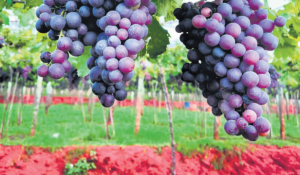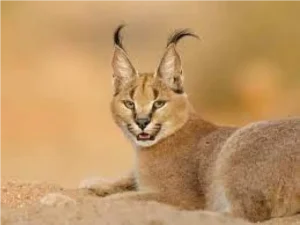GS Paper 1
Shyamji Krishna Varma
News: Prime Minister Narendra Modi recently paid homage to revolutionary freedom fighter Shyamji Krishna Varma on his death anniversary.
Early Life and Education (1857-1870s):
-
- Shyamji Krishna Varma was born in 1857 in modern-day Gujarat.
- He completed his education in India and later became a Sanskrit teacher at Oxford University.
Activism in London (Late 19th to Early 20th Century):
- He founded the Indian Home Rule Society, India House, and The Indian Sociologist in London.
- He also became the first President of Bombay Arya Samaj and inspired figures like Veer Savarkar.
- He propagated the cause of India’s independence through his writings in his publication journal called “Indian Sociologist”.
Legal Career:
- While practicing law as a barrister in London, Varma was barred from practicing by the Inner Temple (a prestigious professional associations for barristers in London) in 1905 due to charges of sedition against the colonial government.
Shift to Paris and Continued Activism (Early 20th Century):
- Facing criticism from the British, Varma relocated to Paris and continued his activism.
- However, with the outbreak of the Second World War, he moved to Geneva, Switzerland, where he spent rest of his life.
Death:
- Varma passed away on March 30, 1930, in Geneva.2
Declining Fertility
- News: The publication of a paper on global population trends in the Lancet has revealed declining birth rates instead of overpopulation.
- Key Facts of Lancet Paper on Global Population:
-
-
- The Lancet paper highlights a significant global population decline, with most countries, including India, projected to experience lower birth rates.
- China faces a particularly dramatic demographic shift, with its population potentially halving by 2100.
- In contrast, Sub-Saharan Africa stands out as an exception, expected to undergo population growth.
- The decrease in birth rates suggests a future characterized by an ageing population, with fewer young individuals and a higher proportion of elderly individuals.
- This demographic shift is anticipated to have far-reaching economic and social implications, impacting job markets, healthcare systems, and social support networks.
- With more elderly individuals requiring care but fewer young people available to support them, adjustments in policies and systems will be necessary to address these challenges effectively.
-
- Factors Influencing Declining Birth Rates:
-
-
- Education and Women’s Empowerment: As women gain greater agency and confidence in the survival of their children, they often choose to have smaller families.
-
-
-
- Workplace Policies and Economic Insecurity: Workplace policies that lack adequate job security and income support for parenthood can discourage couples from having children.
-
-
-
- Rising costs of child-rearing in modern, atomized societies, where traditional support systems are diminishing, further exacerbate this issue.
-
-
-
- Challenges in Informal Employment: Nearly 90% of Indians are informally employed, facing a future devoid of income security and offering only low wages. This economic instability poses a significant barrier to starting or expanding families.
-
-
-
- Income Inequality and Wealth Distribution: Income inequality remains a pressing issue, with the richest 1% of Indians controlling a disproportionate 40% of the nation’s wealth. This disparity contributes to economic insecurity and hampers the ability of many individuals and families to afford raising children.
-
-
-
- Impact on Happiness and Well-being: India’s low ranking of 126th out of 143 nations in the World Happiness Report 2024, coupled with reports of widespread discontent among the country’s youth, underscores the societal impact of economic insecurity and diminishing support structures on overall happiness and well-being.
-
- Way Forward:
-
- Policy Framework for Harnessing Youth Potential: Policies should be crafted to capitalize on India’s demographic dividend, leveraging the large number of young people in the country. This entails creating opportunities for education, skill development, and employment to ensure productive contributions to the economy.
- Progressive Taxation and Economic Equality: Implementation of progressive taxation policies can contribute to a more equitable distribution of wealth and income. This will help mitigate disparities and ensure that economic opportunities are accessible to all segments of society.
- Strengthening Labour and Social Security: Bolstering labour and social security measures is essential to provide stability and support to workers. This includes enacting robust laws for job security, fair wages, and comprehensive social security systems to safeguard against economic uncertainties.
- Enhancing Pension Laws and Benefits: Reforms in pension laws are necessary to ensure adequate retirement benefits for the workforce. Improving pension schemes and expanding coverage will promote financial security and well-being in old age.
- Promoting Healthcare and Long-term Care: Prioritizing universal health coverage is crucial to ensure access to quality healthcare for all citizens. Comprehensive health insurance schemes and increased investment in healthcare infrastructure can contribute to better health outcomes and reduce financial burdens on individuals.
- Long-term Care for Chronic Conditions: A compassionate society must prioritize long-term care for individuals living with chronic conditions. Implementing high-quality long-term care services and support systems will enhance the well-being and dignity of those in need of ongoing assistance.
-
GS Paper 2
International Rice Research Institute
-
- News: International Rice Research Institute targets low-methane rice varieties.
- International Rice Research Institute:
- Establishment: IRRI is an independent, nonprofit, research and educational institute, founded in 1960 by the Ford and Rockefeller foundations with support from the Philippine government.
- Aim:
- It is the world’s premier research organization dedicated to reducing poverty and hunger through rice science;
- Improving the health and welfare of rice farmers and consumers; and
- Protecting the rice-growing environment for future generations.
-
- Headquater: Los Baños, Philippines.
- The Government of India vide its Gazette notification recognises IRRI as an international organisation and accorded privileges and immunities (As per UN Privileges and Immunities Act 1947) that are applicable to United Nations (UN) organizations, for all offices and activities of IRRI in India including, for the IRRI South Asia Regional Centre.
GS Paper 3
Panneer Thiratchai
- News: A sweet treat from Cumbum that is available throughout the year.

- Cumbum Valley, known as the “grapes city of south India,” is renowned for its cultivation of Muscat Hamburg grapes, locally known as “panneer thiratchai.”
- This valley contributes up to 85% of the panneer thiratchai production in India, making it a significant hub for grape cultivation.
- The popularity of panneer grapes among farmers is attributed to their quick growth and early maturity, ensuring year-round availability in the market.
- The fertility of the soil and availability of water in the valley enhance the natural flavor of the fruit, contributing to its quality.
- Panneer thiratchai grapes are medium to large in size, making them suitable for various purposes such as wine-making, jam production, and raisin preparation.
- In 2023, Cumbum grapes received the Geographical Indication (GI) tag.
Fish otolith
- News: A new market trend has emerged with the introduction of ornaments made from fish otoliths, skillfully crafted by a dedicated group of fisherwomen in Vizhinjam. These artisans received training from scientists associated with the Central Marine Fisheries Research Institute (CMFRI), enabling them to create unique and intricate pieces of jewelry.
- Definition: Otoliths are biomineralised ear stones that help fish hear & provide it a sense of balance. These are important in fish studies as they have species-specific shapes & grow throughout their life.
-
-
-
- They are commonly known as “earstones,” and are hard, calcium carbonate structures located directly behind the brain of bony fishes.
-
-

- Types: There are 3 types of otoliths, all of which aid fish in balance & hearing:
-
- Sagitta: It is involved in the detection of sound & the process of hearing or converting sound waves into electrical signals.
- Asteriscus: It is involved in the detection of sound & the process of hearing.
- Lapillus: It is involved in the detection of gravitational force & sound.
-
South East Africa Montane Archipelago (SEAMA)
- News: A recent study in southern Africa has unearthed a wealth of previously undocumented biodiversity in a newly recognised ecoregion called the South East Africa Montane Archipelago (SEAMA).
- SEAMA:
-
- SEAMA is a newly discovered mountainous region stretches across northern Mozambique to Mount Mulanje in Malawi, southern Africa’s 2nd highest mountain.
- SEAMA has distinctly higher annual rainfall & humidity, especially in the dry season, compared to surrounding regions.
-
- Flora and Fauna:
-
- It has been found that SEAMA has 127 plants, 45 vertebrates (amphibians, reptiles, birds, mammals) and 45 invertebrate species (butterflies, freshwater crabs).
- It also has two endemic genera of plants and reptiles.
- There are 22 endemic reptile species.
- SEAMA’s endemic reptiles are highly threatened by habitat loss.
-
- Importance:
-
- Ecological regions (ecoregions) are widely used to inform global conservation priorities.
- They define large expanses of land or water, characterised by geographically distinct assemblages of animals and plants.
-
- Threats:
- Since 2000, SEAMA has lost 18% of its primary humid forest cover (up to 43% in some sites) which is one of the highest deforestation rates in Africa.
- The major cause of forest loss in SEAMA is slash and burn shifting agricultural practices, used for subsistence food production by local communities, along with charcoal production, for household cooking and as a source of revenue.
Clean Energy Transitions Programme (CETP)
- News: The International Energy Agency (IEA) recently released its 2023 Clean Energy Transitions Programme report.
- Clean Energy Transitions Programme (CETP):
- It was established in 2017.
- It is IEA’s flagship programme for taking action to achieve a clean energy transformation worldwide.
- It is funded primarily by IEA member countries.
- Key Pillars of CTEP:
-
- Accelerating Clean Energy Transitions: Partnering with countries to expedite their transition to clean energy. This initiative aligns with the objectives of the UN Sustainable Development Goals and the Paris Agreement.
- Utilizing IEA Expertise: Leveraging the International Energy Agency’s (IEA) extensive knowledge across various fuels and technologies to facilitate robust clean energy outcomes on a global scale. This support is extended through active participation in key international forums such as the G7, G20, COP, and Clean Energy Ministerial meetings.
- Shaping Global Dialogue: Taking a leadership role in shaping the global discourse on critical clean energy transition issues.
- International Energy Agency (IEA):
- The International Energy Agency is a Paris-based autonomous intergovernmental organization established in the framework of the Organisation for Economic Co-operation and Development (OECD) in 1974.
- Aim: Originally created in response to the 1973 oil crisis, its primary aim was to help member countries ensure the security of oil supply (& energy security).
- Key Areas: It has four main areas of focus:
-
- Energy security
- Economic development
- Environmental awareness and
- Engagement worldwide.
-
- Members: It has 31 member countries and eight association countries.
-
- India became an associate member in 2017.
-
- Reports: World Energy Outlook report is released annually.
Plant Tissue Culture
- News: A tissue culture laboratory is being set up at the Asola Bhatti Wildlife Sanctuary by the city’s forest and wildlife department for Delhi trees.
- Plant Tissue Culture (PTC):
- It refers to the cultivation of undifferentiated plant cells, tissues or organs on synthetic media under aseptic environment and suitable controlled physical conditions.
- Plant tissue culture is based upon the unique characteristic of a plant cell i.e., totipotency.
-
- Totipotency is the ability of a vegetative cell to divide and differentiate into any type of specialised cell or to regenerate into a whole plant.
-
Totipotency is the ability of a vegetative cell to divide and differentiate into any type of specialised cell or to regenerate into a whole plant.
- Types of PTC:
-
- Organ Culture : Any part of the plant (root, stem, leaf, and flower) is used as an explant for culturing purposes.
-
-
- An explant is the initial piece of plant tissue that is used to initiate the culture.
-
- Seed culture: The explants are obtained from the plants that are already cultured & grown under in vitro conditions.
- Embryo culture: The embryo is isolated & cultured under in vitro conditions.
Cardamom
- News: Drought situation posing threat to Cardamom sector.
- Cardamom: It is a monotype genus of plants found in the tropical Indo-Malaya region (native to the evergreen rainy forests of the Western Ghats).
- Required climatic conditions –
-
- Rainfall: 1500-2500 mm
- Temperature: 15°C to 35°C
- Height: 600-1200 m above mean sea level.
- Soil: acidic forest loamy soils
-
States in India Producing Cardamom: It is mainly cultivated in Kerala (58%), Karnataka & Tamil Nadu.
Caracal
News: There is a dire need to protect India’s scrublands to save the caracal.

Features:
- The caracal is an elusive, primarily noctural animal.
- The caracal has traditionally been valued for its litheness and extraordinary ability to catch birds in flight.
- The name caracal comes from the Turkish karakulak, meaning ‘black ears’.
- In India, it is called siya gosh, a Persian name that translates as ‘black Ear’.
- A Sanskrit fable exists about a small wild cat named deergha-karn or ‘long-eared’.
- It was a favourite coursing or hunting animal in medieval India.
- Caracal finds mention in Abul Fazl’s Akbarnama, as a hunting animal in the time of Akbar (1556-1605).
- Descriptions and illustrations of the caracal can be found in medieval texts such as the Anvar-i-Suhayli, Tutinama, Khamsa-e-Nizami, and Shahnameh.
Habitat:
- It is found in Rajasthan, Gujarat and parts of MP in India.
- Besides India, the caracal is found across Africa, the Middle East, Central and South Asia.
Conservation Status – Wild Life (Protection) Act, 1972: Schedule I
Tripura’s Matabari Pera & Pachra
- News: Matabari Pera, Pachra from Tripura recently got the GI tag.
- Matabari Pera: It is a dairy-based confectionery that is served as prasad at the Tripurasundari temple.
- Pachra: It is a handwoven cloth used by Indigenous communities.
- About GI Tag:
- Definition: Geographical Indications of Goods are defined as that aspect of industrial property which refer to the geographical indication referring to a country or to a place situated as being the country or place of origin of that product.
-
- Typically, such a name conveys an assurance of quality and distinctiveness which is essentially attributable to the fact of its origin in that defined geographical locality, region or country.
- GI Tag in India: The Geographical Indications of Goods (Registration and Protection) Act seeks to provide for the registration and protection of Geographical Indications relating to goods in India.
- Governed By: Under Articles 1 (2) and 10 of the Paris Convention for the Protection of Industrial Property, geographical indications are covered as an element of IPRs.
-
-
- It is also covered under the Trade Related Aspects of Intellectual Property Rights (TRIPS) Agreement of WTO.
-
- Validity: This tag is valid for a period of 10 years following which it can be renewed.
- Significance: The Geographical Indication registration confers the following benefits:
-
- Legal protection to the products.
- Prevents unauthorised use of GI tag products by others.
- It helps consumers to get quality products of desired traits and is assured of authenticity.
- Promotes the economic prosperity of producers of GI tag goods by enhancing their demand in national and international markets.
-
Facts for Prelims
MYAC (One Million Youth Actions Challenge)
- News: 1MYAC is promoted by UN Climate Change Learning Partnership (CC:Learn) as part of the UN CC:Learn affiliation programme.
- UN CC:Learn:
-
- It is a collaborative effort involving 36 multilateral organizations.
- It is dedicated to assisting countries in developing the knowledge and skills necessary to address climate change effectively.
-
- The initiative focuses on promoting four Sustainable Development Goals (SDGs):
-
- Reframing SDG 6: Clean Water and Sanitation
- SDG 12: Responsible Consumption and Production
- SDG 13: Climate Action
- SDG 15: Life on Land
-
- Importance: Through targeted initiatives and educational efforts, 1MYAC aims to empower young people to contribute towards achieving these SDGs, fostering a generation committed to environmental sustainability and global well-being.
